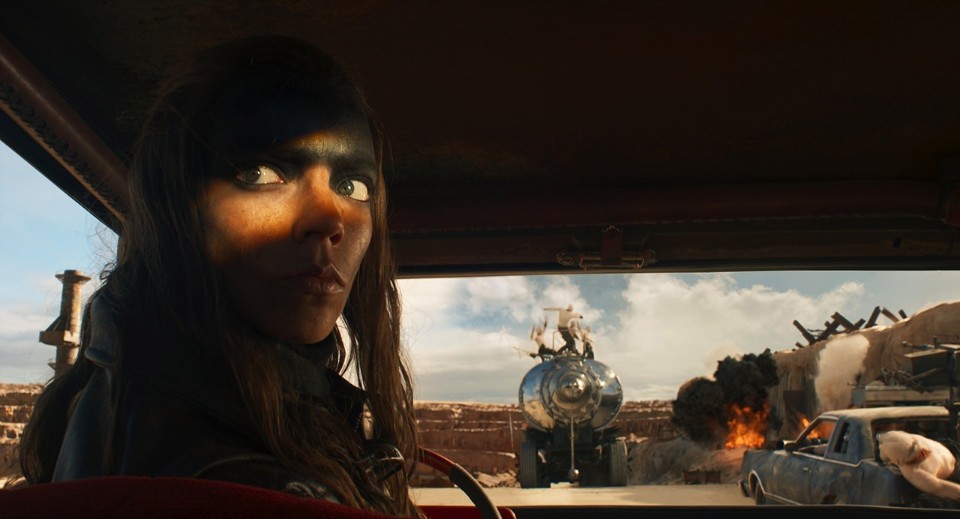Mad Max is a car. The saga began with Interceptor, the first film, shot in total independence with a very low budget on a road in the desert and a car driven by a protagonist of few words. Interceptor was the very name of the car model at the heart of it all. Everything therefore stemmed from an automotive design that sprang forth a vision of a future in which water is more precious than gasoline. The two subsequent films, The Road Warrior and Mad Max Beyond Thunderdome, with allocated budgets more suitable to the ambitions, expanded that universe by creating costumes, alternative modes of transport, fortified citadels, bustling settlements, unique constructions, architectural styles, and distinctive hairstyles. These additions would go on to leave an indelible mark, shaping cultural touchstones for decades to come, from Buronson for First of the North Star to the immersive world of the video game Borderlands.
Everything in Furiosa is about the remnants of what we used to call religions, and it does so by focusing on objects
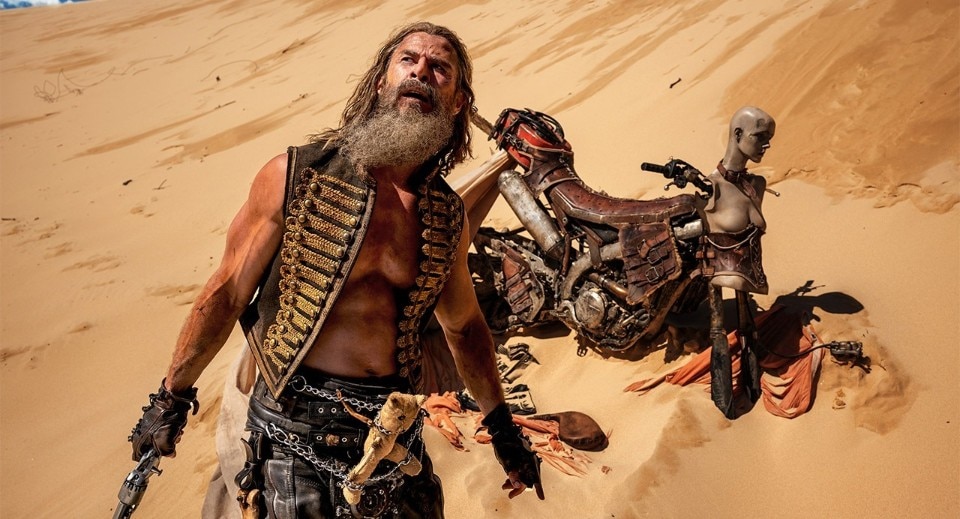
That’s precisely why, when George Miller, the mastermind behind it all, revisited the franchise thirty years later, in 2015, with Mad Max: Fury Road, he once again began with design. This time, there were more vehicles, more masks, more intricate constructions, and more distinctive elements like metal music, trucks equipped with speakers, flamethrowing guitars, and the blood-sucking pipes. For the first time, a social organization centered around these vehicles emerged: the cult of gasoline, with the steering wheel elevated to the status of a religious fetish.
In Fury Road, there were so many design concepts and ingenious applications that there was no need to narrate much – the story revolved around a group of trapped individuals trying to escape. And yet, despite the lack of a complex plot, a whole mythology took shape in the viewer’s head. We could grasp everything about this future world from the (meager) decor of the rooms and their use of objects. We understood what resources exist in abundance and what do not, what the values of the dominant society were, what the hierarchy was, and what possibilities the characters had.
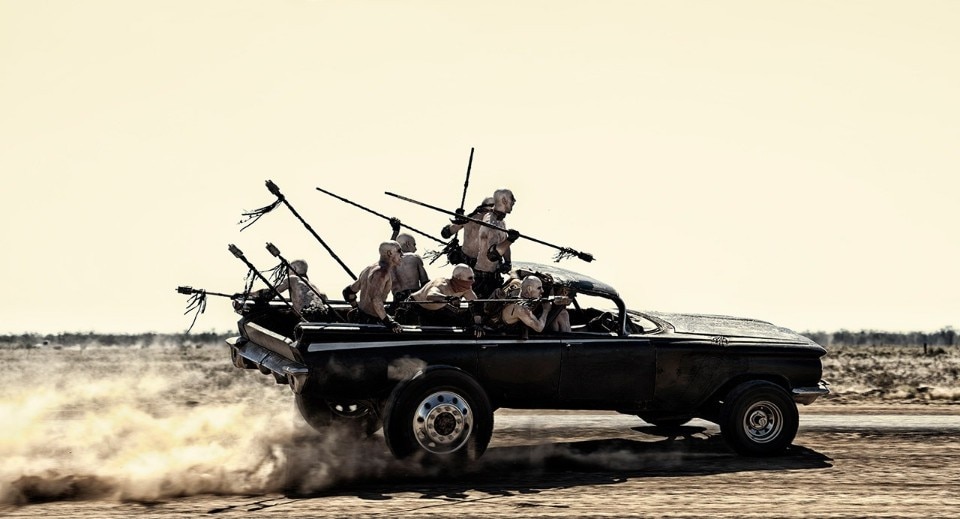
Now, with Furiosa: A Mad Max Saga − hitting theaters a decade after Mad Max: Fury Road, once again launched from the Cannes Film Festival, to then swiftly captivate audiences worldwide − further expands the universe. Everything in Furiosa is about the remnants of what we used to call religions, and it does so by focusing on objects. Chris Hemsworth, mad warlord, enters the scene with a Christological veil, a kind of shroud. There is no shortage of references to objects even from Islam and other religions, in this film that is not really spiritual but that knows how to evoke through images what that world lacks.
More vehicles, more masks, more intricate constructions, and more distinctive elements like metal music, trucks equipped with speakers, flamethrowing guitars, and the blood-sucking pipes. A social organization centered around these vehicles emerged: the cult of gasoline, with the steering wheel elevated to the status of a religious fetish.
It is nothing unlike the excellent design work Denis Villeneuve did in Dune, in which he manages to tell the story of an entire planet with all its society with just a few scenes and visual choices. In some ways, this Australian desert could also be another planet in the Dune galaxy: it echoes of it in many ways, even through the Greco-Roman power mythology that, as always in this saga, is represented in the means of transportation.
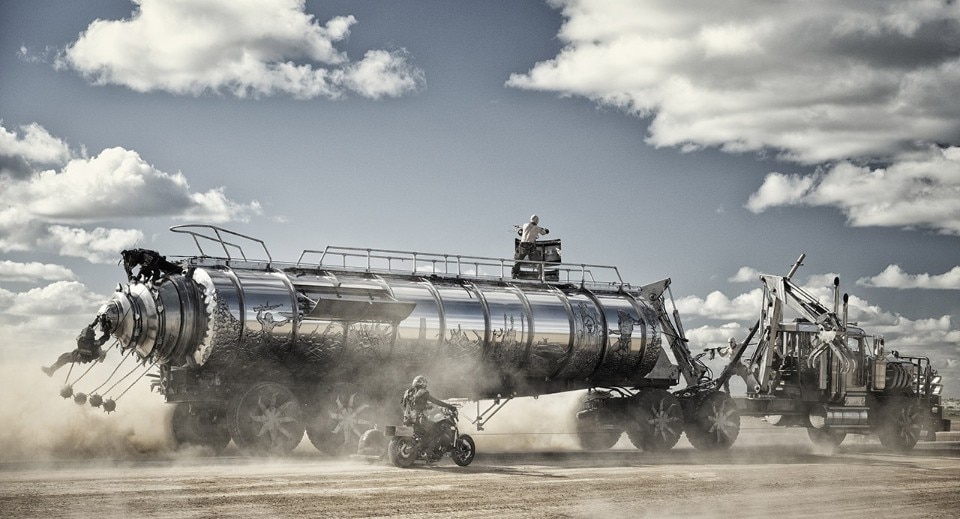
The design peak of Furiosa: a Mad Max Saga is reached in its cars and motorcycles. Each vehicle embodies both functional and industrial design, revealing their purpose and manner of use, while also captivating with their aesthetic allure. Hemsworth’s commanding presence is epitomized by his chariot, a modern twist on the Roman original, pulled not by horses but by three motorcycles, each "ridden" with reins affixed to the handlebars. Paragliders soar above the fray in the signature road wars of the franchise, while sidecars are used to sneak under armored vehicles. The film brims with inventions from an era in which mechanical prowess is venerated, akin to the reverence accorded to digital expertise in our time. In Furiosa, cars aren’t just vehicles; they are characters unto themselves, embodying personalities and extending the essence of their drivers. For the warlord with imperial aspirations, it is a motorcycle chariot; for Furiosa, who has metal prosthesis in place of her missing arm, it is a car with a wooden prosthesis for a tire.
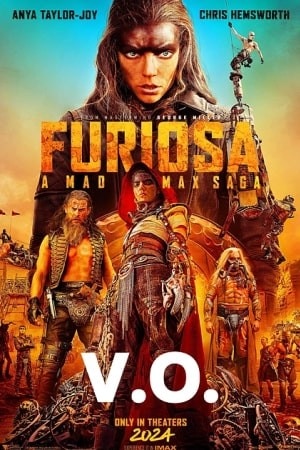
And above all reigns the great truck that transports the most precious goods. Touted as the ultimate expression of the society that produced it and a perfect symbol thereof, it is piloted by Furiosa and the man with whom she shares a heart-stopping slice of action. This vehicle, both a war machine and a testament to a worldview, is a war and transportation mechanical design gem from the industrial era that, like any form of design, speaks volumes about the era in which it was created.
The design peak of Furiosa: a Mad Max Saga is reached in its cars and motorcycles. Each vehicle embodies both functional and industrial design, revealing their purpose and manner of use, while also captivating with their aesthetic allure.
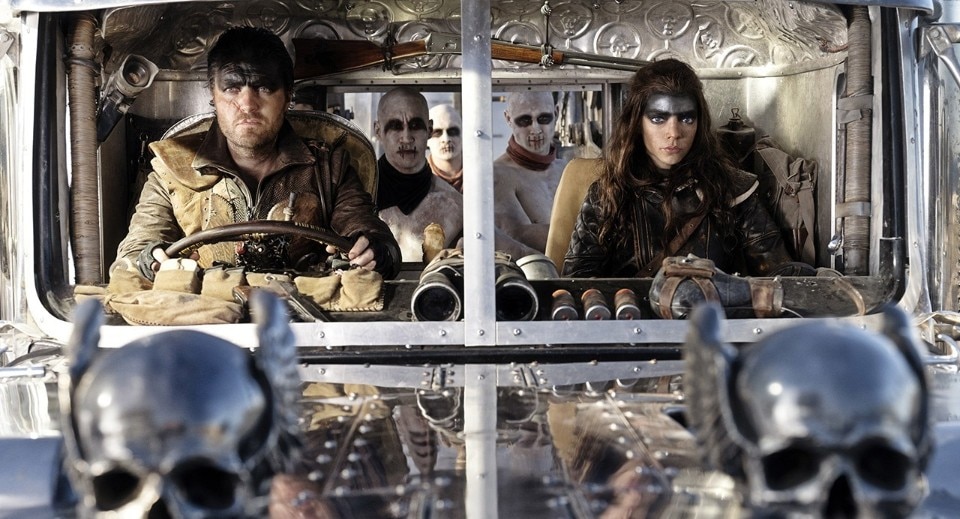
Its metal panels are adorned like those of an ancient Roman column; it boasts an underground pulley system that allows Furiosa to go underneath it, between the wheels, to swiftly repair any damage. Being a vehicle built in an era of pursuits and hunts, it harbors a lethal mechanism on its underside; it houses two engines to survive in a desert where stopping is not an option; and its chrome-plated panels reflect the society of Immortan Joe’s use for chrome, similar to the usage of blue robes in Christianity to symbolize spiritual purity.
The focus is no longer solely on the materialism of mechanics. From the very outset, Miller appears to be channeling images from his previous work, Three Thousand Years of Waiting – a movie about the genies and the Middle East − while other inspirations also come into play. In the first scenes, we discover a tribe whose attire echoes North African traditions and spiritual customs, and gestures and hairstyles that replace the cocaine-fueled excitement of the saga’s characters with an almost religious calm and the scent of incense. Even the initial chase sequence – first of many − is based on calmness, strategy, and the passing of days and nights. And to create the oxymoron that is a calm chase, once again, impeccable action design is required.
Considering the frenzy of action that unfolds over the next two hours of the film, it’s not surprising that at the end, among the credits following the director, cinematographer, and editors, appears the name of Guy Norris, a stuntman who is credited as the "Action Designer," an unprecedented role that is bestowed with the dignity of the highest positions on set. Each action sequence was a meticulous construction of environments and perspectives that allow us to understand what is happening (who is where in relation to whom) in the clearest and quickest manner possible. Much like the best design, Furiosa’s action design aimed to achieve the essential: accomplish the most with the fewest moves and the greatest simplicity. And it succeeded.


